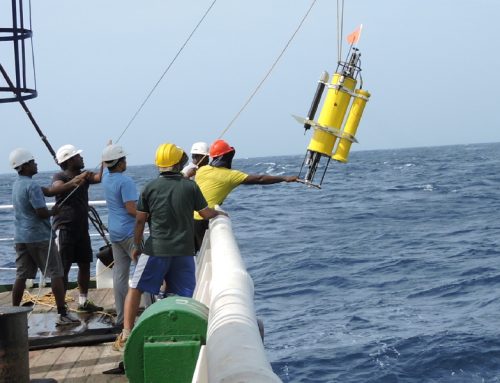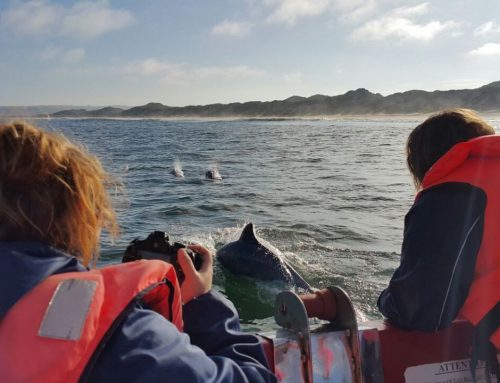We need to look to the earth beneath our feet to see the riches of our land. This could not be more evident than in the smallest, richest floral kingdom in the world, the Cape Floristic Region (CFR), also known as the Cape Floral Kingdom.
The CFR is home to over 9000 indigenous plant species, broadly known as fynbos, in an area that covers 90 000 km2, mainly in the Western Cape, but also in parts of the Eastern Cape, as far as Port Elizabeth. Of the 9000 species, 6 000 are endemic to the CFR.
Recognising this national asset, the Flower Valley Conservation Trust, an independent NGO that partners with land users, government and conservation organisations, launched a sustainable fynbos-harvesting programme in 2003 on the Agulhas Plain in the southernmost region of the CFR.
The Agulhas Plain spans 270 000 hectares of privately and state-owned land between Hermanus and the De Hoop Nature Reserve in the Western Cape. The programme has flourished here over the past 10 years, with best-practice principles currently demonstrated on 60 000 hectares on the Plain. The programme shows that it is possible to sustainably harvest fynbos from this biodiversity hotspot, in a commercially viable way. At the same time this creates businesses and jobs for people living in the surrounding rural communities.
The plan now is to roll out the project across the entire CFR where harvesting in the wild occurs. To contribute to this, the WWF Nedbank Green Trust and the European Union are co-funding the management of three new fynbos-harvesting areas in the Boland, West Coast region and around Riversdale.
‘The programme is voluntary and it is all about promoting the green economy. It supports the growth of the sustainable fynbos-harvesting programme, increases the number of biodiversity stewards on private land and it fulfills the social responsibility need of decent green jobs,’ says Flower Valley’s conservation director, Roger Bailey, who has been with the programme from the outset.
Bailey’s love of fynbos developed when he was a child growing up in Bot River in the Overberg where his family would hike in the mountains. From a young age he knew he wanted to work in the conservation field. He initially worked as a volunteer in the Bot River area, the botanical gardens in Villiersdorp in the Boland, the Kogelberg Nature Reserve and CapeNature.
‘Fortunately for me, during this time, there was a PhD student from the United States doing a study on the spread of Argentine ants in the fynbos in the Kogelberg Nature Reserve and I was employed as her research assistant,’ says Bailey.
From there he moved on to the Agulhas National Park where he worked with private landowners within the reserve as a task assessor, graduating to senior project manager in the Working for Water Programme in the Park. He was responsible for overseeing the alien-clearing programme. His next appointment was with the Flower Valley Conservation Trust where he has been ever since.
‘Sound, holistic land management in the fynbos areas is a top priority for conservation intervention, and fortunately the government and many private landowners have identified it as such,’ he explains.
‘If we look at the Agulhas Plain, for example, there are close to 2500 plant species of which approximately 100 are endemic, at least 110 are in the Red Data Book and about 40 are unique vegetation types. Around 150 species from this region are harvested for the local and international flower trade. It is extremely important that we promote holistic land management practices, the programme’s code of best practice for wild harvesters, a vulnerability index to guide species choice for bouquets, and training and skills development for harvesters.’
Part of Bailey’s work is to coordinate the Agulhas Biodiversity Initiative’s (ABI) alien-clearing project. This is a landscape initiative operating across the Overberg to clear mainly pine, rooikrans, port jackson, myrtle and hakea.
The Sustainable Harvesting Programme participates in ongoing research on fynbos, aimed at gaining a better understanding of how different species react to fynbos harvesting and other land-related activities. For example, recent research found that resprouters such as silver brunia (a species picked for the market) have a high mortality rate when 100% harvesting is allowed. It has been recommended that these species be harvested at between 25% and 50%.
To assist Bailey and lead the new expansion area, Bronwyn Botha, formerly a project manager with the Wilderness Foundation, has joined the programme. The WWF Nedbank Green Trust is funding her salary.
Botha collaborates closely with a number of field monitors who work as fynbos harvesters, alien clearers and farm workers. They are using their new monitoring skills, acquired through training offered by the Sustainable Harvesting Programme, to collect information on fynbos trends, while spotting potential threats.
According to Botha, research on fynbos trends is essential to better equip fynbos harvesters and suppliers. “Through ongoing research, we can better understand many of the threats to fynbos – such as invasive alien plants and poor land management. This allows us to work positively with various stakeholders, to ultimately boost fynbos sustainability, and to improve the sustainable livelihoods within the project area. We’re extremely appreciative of WWF Nedbank Green Trust’s role in partnering with us in this project.”
Information bytes:
For more information about the WWF Nedbank Green Trust go to www.nedbankgreen.co.za and click on WWF Nedbank Green Trust to read articles on some of the over 200 community and conservation projects it has funded over the past 20 years.
The Flower Valley Conservation Trust is an independent NGO that partners with land users, government and conservation organisations. For more information go to www.flowervalley.org.za, or visit its Facebook page: Flower Valley Conservation Trust.
The Cape Floristic Region (CFR) or Cape Floral Kingdom is the smallest of the six Floral Kingdoms in the world, and is the only one contained in its entirety within a single country.
The CFR compares with some of the richest floral regions worldwide, surpassing many tropical forest regions in its floral diversity.





